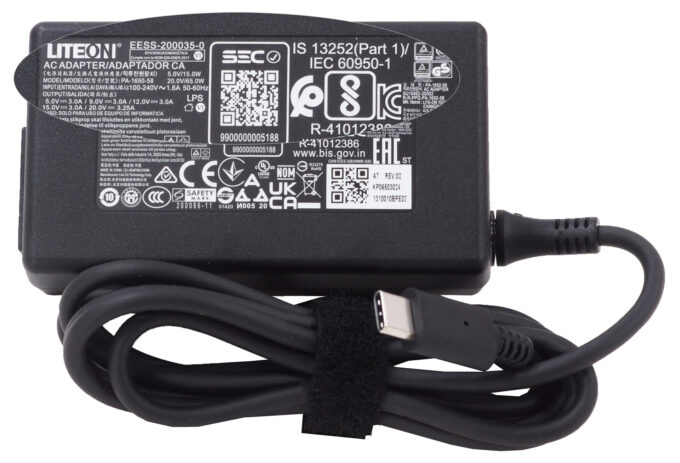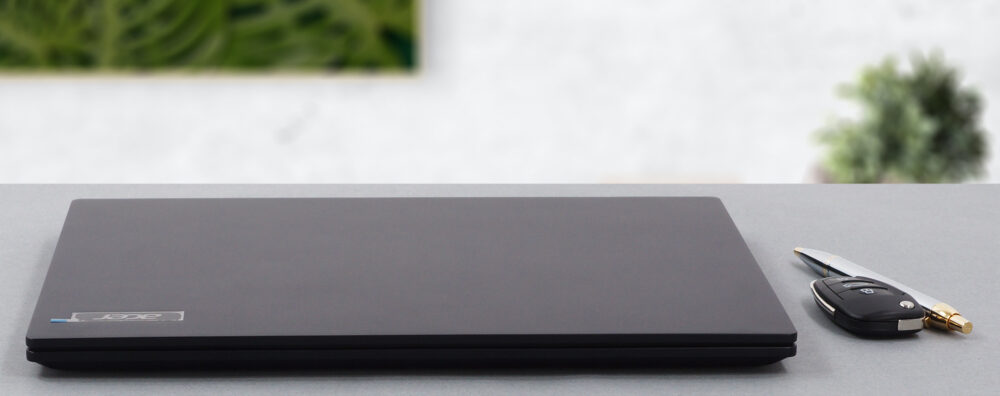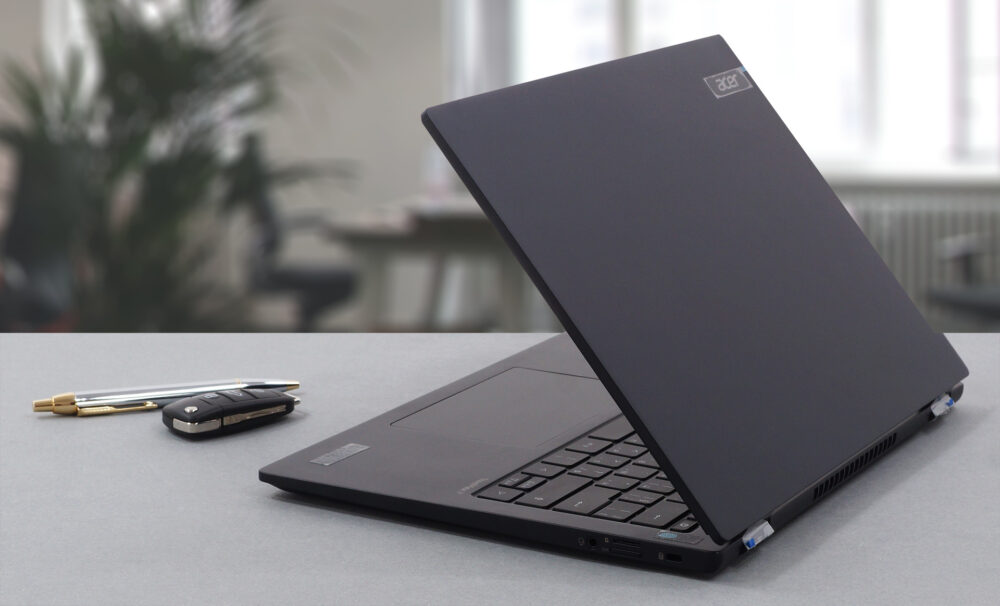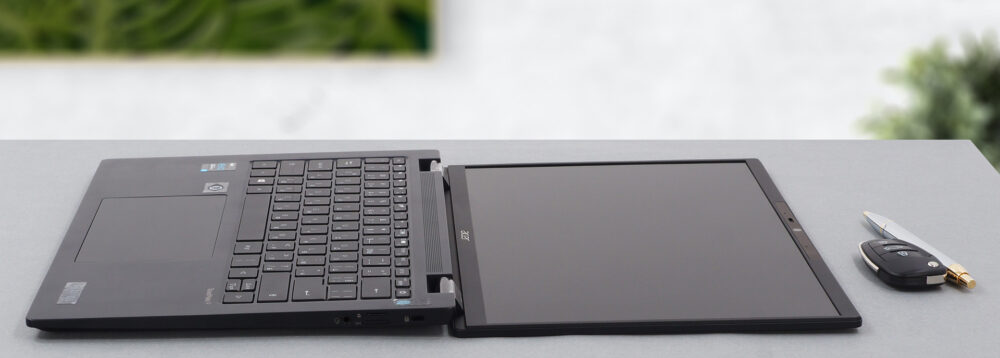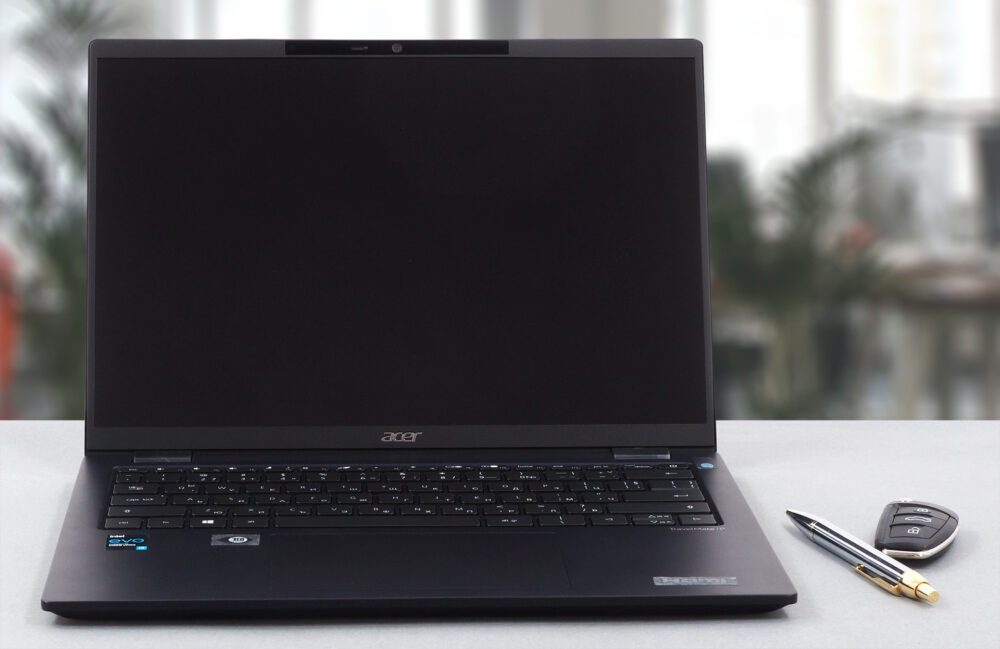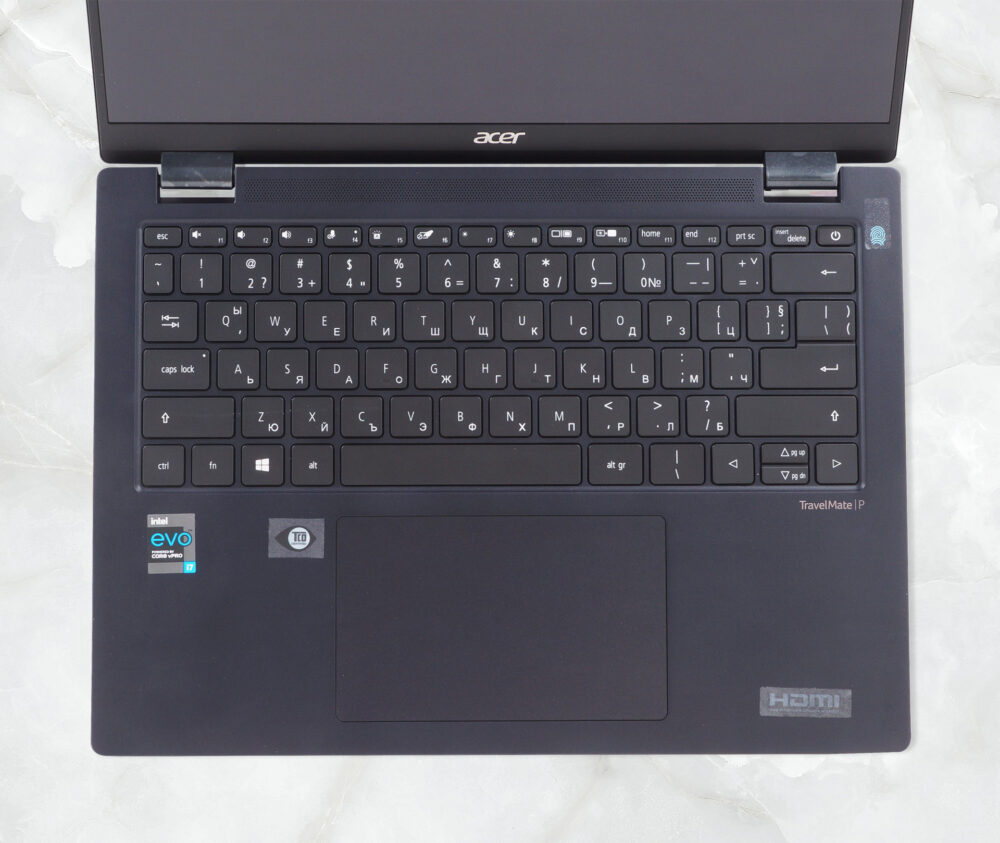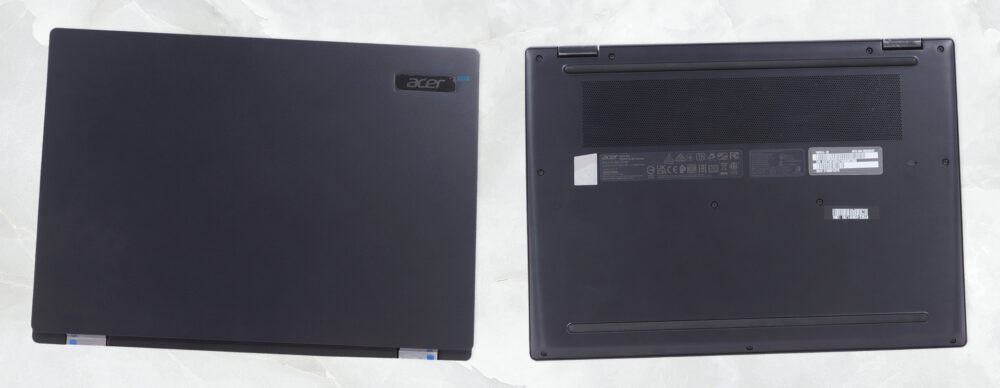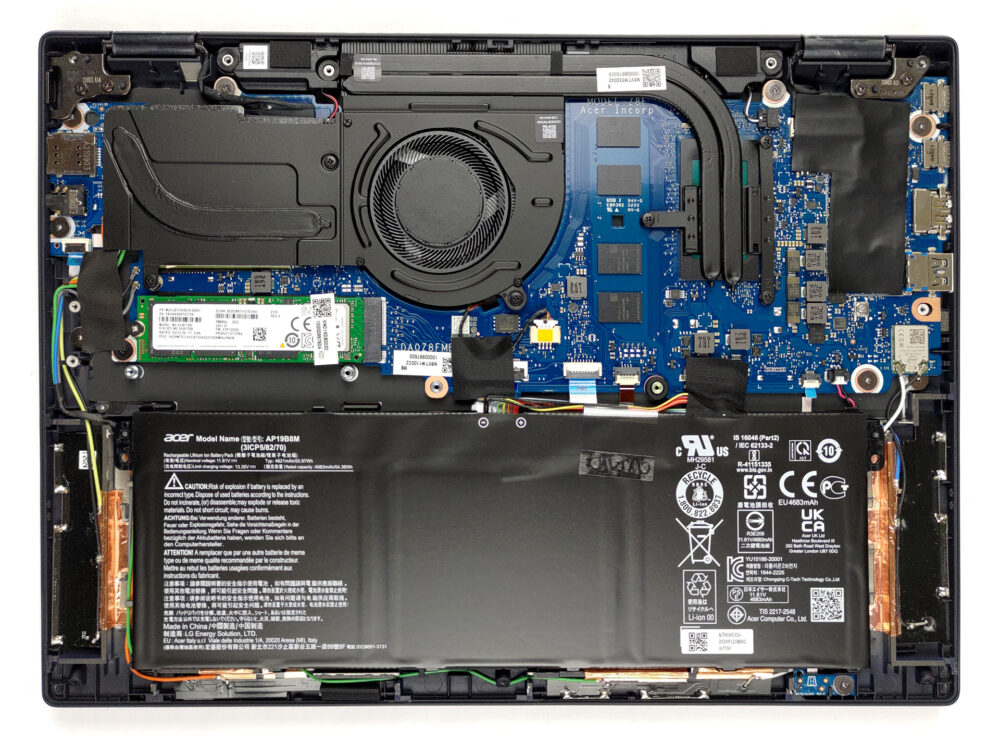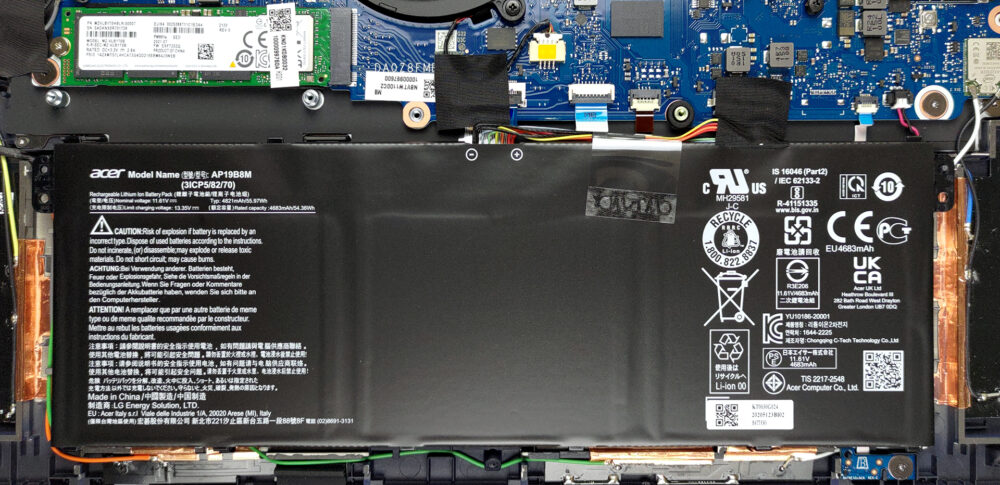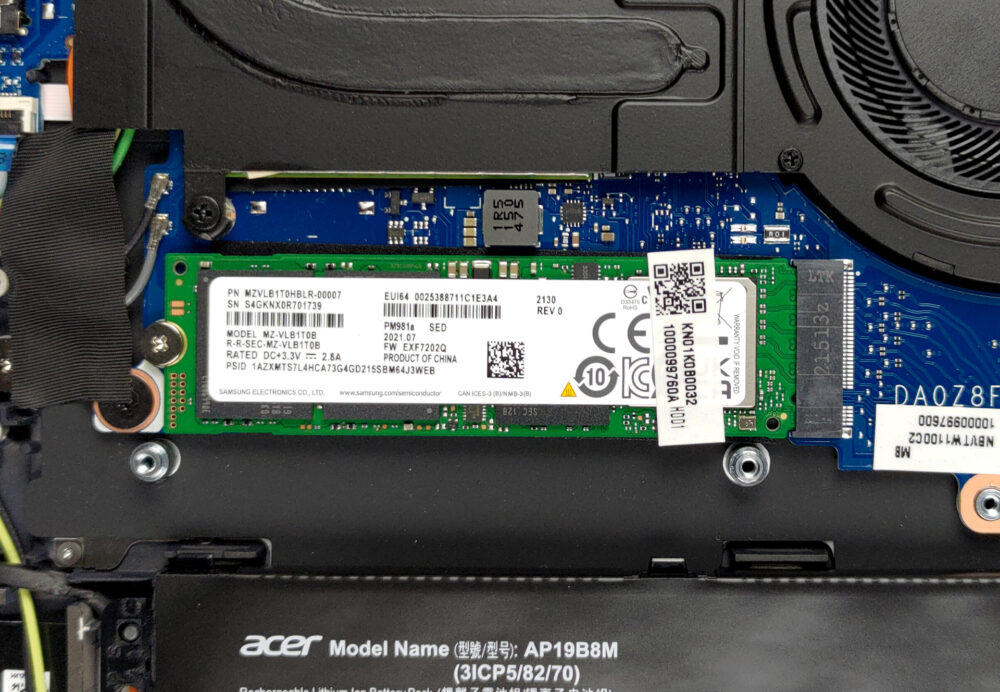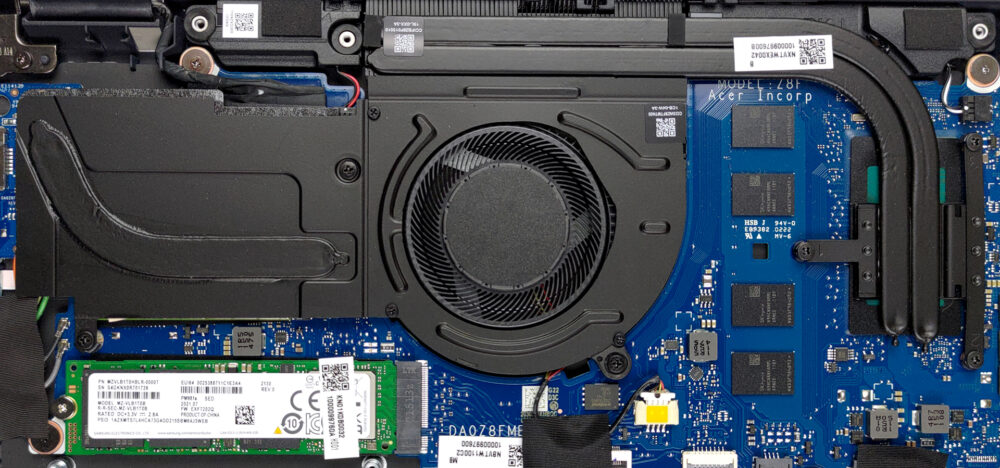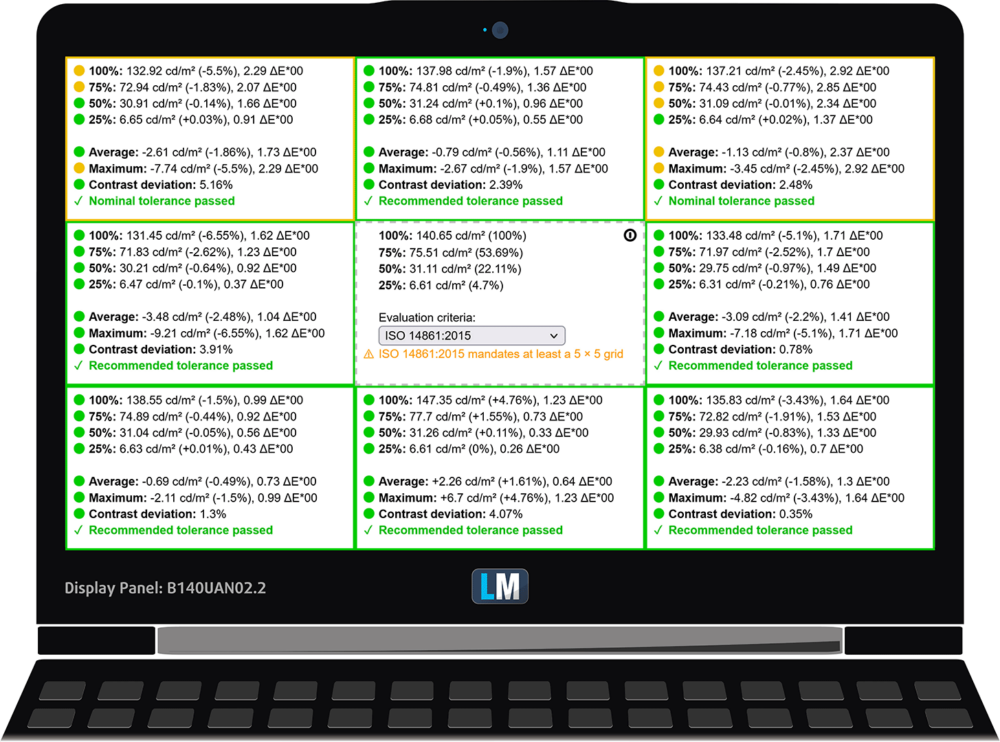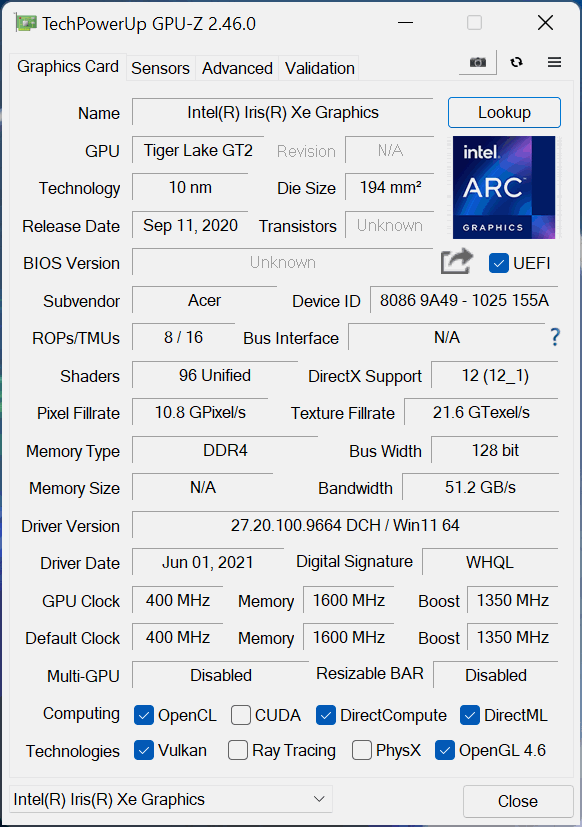Acer TravelMate P6 (TMP614-52) review – a ton of features compressed to one kilo
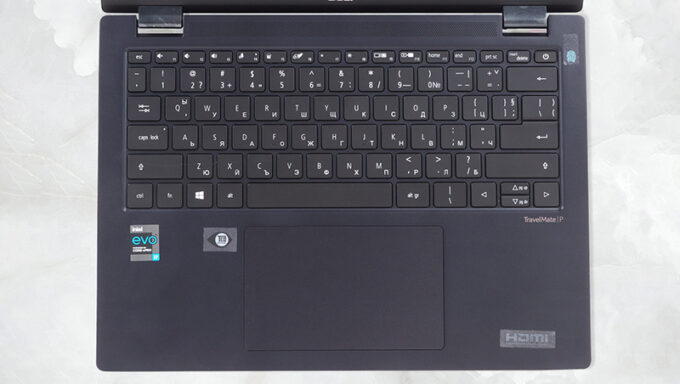 Acer seems to have no intentions to neglect its business notebook series. Today, we will show you our take on the TravelMate P6 (TMP614-52). This is a premium business notebook, that takes a little bit different approach, compared to the competition.
Acer seems to have no intentions to neglect its business notebook series. Today, we will show you our take on the TravelMate P6 (TMP614-52). This is a premium business notebook, that takes a little bit different approach, compared to the competition.
Indeed, the hardware inside doesn’t present any surprises. You get the Tiger Lake-U treatment. Thanks to the vPro enhancements of some members of this processor family, you get stable and solid performance. Additionally, the laptop is part of the so-called “Evo” platform. This ensures that every notebook, bearing the “Evo” sticker will deliver no matter what.
Since this is a productivity-based machine, it’s only natural for it to receive a 16:10 display. Acer promises full sRGB coverage, and we’ll surely test that later on.
Now, let’s take the laptop out of its packaging, and see what is all the fuss about its supposedly thin and light chassis.
You can check the prices and configurations in our Specs System: https://laptopmedia.com/series/acer-travelmate-p6-tmp614-52/
Contents
Specs Sheet
- Display
- 14.0", FHD+ (1920 x 1200), IPS
- HDD/SSD
- up to 1000GB SSD
- M.2 Slot
- 1x 2280 M.2 NVMe slot See photo
- RAM
- up to 32GB
- OS
- Windows 11 Pro, Windows 10 Pro, Windows 10 Home
- Battery
- 56Wh, 4-cell, 56Wh
- Body material
- Aluminum, Magnesium alloy
- Dimensions
- x x 16.8 mm (0.00" x 0.00" x 0.66")
- Weight
- 1.00 kg (2.2 lbs)
- Ports and connectivity
- 1x USB Type-A
- 2x USB Type-C
- Thunderbolt 4
- HDMI
- Card reader
- MicroSD
- Wi-Fi
- 802.11ax
- Audio jack
- 3.5mm Combo Jack
- Features
- Fingerprint reader
- optional
- Web camera
- IR Camera
- Backlit keyboard
- optional
- Microphone
- Speakers
- Dual Speakers
- Optical drive
- Security Lock slot
- Kensington Lock Slot
All Acer TravelMate P6 (TMP614-52) configurations
What’s in the box?
Inside the package, you will find a lot of paperwork, a USB Type-C to LAN port adapter, a SIM card tray ejection tool, as well as a 65W USB Type-C charger.
Design and construction
First and foremost, let’s discuss the design. It is so generic that it looks sexy. With all of the manufacturers, “even Lenovo” trying to stand out, making a super basic-looking device starts looking more attractive than ever. Its lines are smooth, the finish is matte, and is not a fingerprint magnet.
What is more spectacular about it, however, is the weight. It stops the scales at exactly 1 kilo, while its profile is 16.8mm. This is all possible thanks to the aluminum-magnesium alloy. Furthermore, the laptop has passed the MIL-STD-810H durability test certifications, which is mindblowing. Well, the lid is definitely bendy, while the chassis is surprisingly resistant to flex.
Thankfully, the hinges here are extremely smooth, which allows the lid to be opened with one hand. Once you open it, you will be met by thin bezels and a matte display. Above it, there is an array of sensors. This includes the HD Web camera, and the IR face recognition sensor. In addition, you get a privacy shutter.
You will be happy to hear that the device is equipped with a backlit keyboard. Its key travel is decent, considering the thickness of the machine. Plus, the feedback felt clicky and comfortable. In the top right corner, there is the power button, which doubles as a fingerprint reader in some units.
Surprisingly, the touchpad is more impressive. It has a huge area, smooth gliding, and accurate tracking. Moreover, 100% of the surface can be clicked, while its cover is made out of Gorilla Glass. Also, there is NFC as an option in some models.
Due to the fact that the speakers are placed above the keyboard, the bottom panel is left for the large ventilation grill. After it draws the cool air from there, the single fan blows it away through a vent on the back.
Ports
On the left side of the notebook, you will see two Thunderbolt 4 connectors (either of which can be used for charging), an HDMI connector, and a USB Type-A 3.2 (Gen. 2) port. If you look at the other side, you’ll find a Kensington lock slot, a MicroSD card reader, a SIM card tray, and an аudio jack.
Disassembly, upgrade options and maintenance
To remove the bottom panel, you need to undo 11 Torx-head screws. After that, pry the panel with a plastic tool, starting from the hinge gaps.
The battery inside has a capacity of 56Wh. It lasts for nearly 17 hours of Web browsing, or about 12 hours and 30 minutes of video playback. Taking the battery out of the laptop is as simple as unplugging the battery connector.
Here, the memory is soldered to the motherboard. The maximum amount you can get is 32GB of quad-channel LPDDR4x RAM. Storage-wise, there is a single M.2 PCIe x4 slot.
In terms of cooling, there are two heat pipes, a heat sink, and a medium-sized fan. Interestingly, there is one more heat pipe dedicated to the 5G modem.
Display quality
Acer TravelMate P6 (TMP614-52) uses a WUXGA IPS touchscreen panel, model number AUO B140UAN02.2 (AUO6F96). Its diagonal is 14″ (35.6 cm), and the resolution – 1920 x 1200. Additionally, the screen ratio is 16:10, the pixel density – 162 ppi, their pitch – 0.16 x 0.16 mm. The screen can be considered Retina when viewed from at least 53 cm (from this distance, the average human eye can’t see the individual pixels).

Viewing angles are comfortable. We have provided images at 45 degrees to evaluate quality.
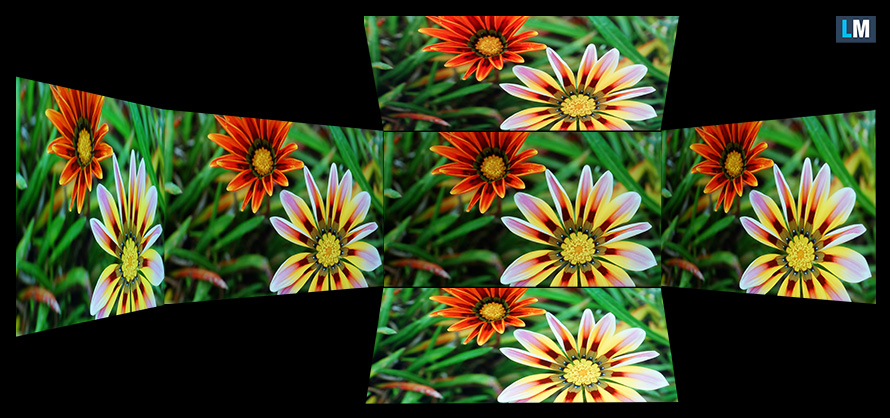
Also, a video with locked focus and exposure.
The maximum measured brightness is 364 nits (cd/m2) in the middle of the screen and 355 nits (cd/m2) average across the surface with a maximum deviation of 7%. The Correlated Color Temperature on a white screen and at maximum brightness is 6770K (average) – slightly colder than the 6500K optimum for sRGB.
In the illustration below you can see how the display performs from a uniformity perspective. The illustration below shows how matters are for operational brightness levels (approximately 140 nits) – in this particular case at 41% Brightness (White level = 141 cd/m2, Black level = 0.08 cd/m2).
Values of dE2000 over 4.0 should not occur, and this parameter is one of the first you should check if you intend to use the laptop for color-sensitive work (a maximum tolerance of 2.0 ). The contrast ratio is very good – 1870:1.
To make sure we are on the same page, we would like to give you a little introduction to the sRGB color gamut and the Adobe RGB. To start, there’s the CIE 1976 Uniform Chromaticity Diagram that represents the visible specter of colors by the human eye, giving you a better perception of the color gamut coverage and the color accuracy.
Inside the black triangle, you will see the standard color gamut (sRGB) that is being used by millions of people on HDTV and on the web. As for Adobe RGB, this is used in professional cameras, monitors, etc for printing. Basically, colors inside the black triangle are used by everyone and this is the essential part of the color quality and color accuracy of a mainstream notebook.
Still, we’ve included other color spaces like the famous DCI-P3 standard used by movie studios, as well as the digital UHD Rec.2020 standard. Rec.2020, however, is still a thing of the future and it’s difficult for today’s displays to cover that well. We’ve also included the so-called Michael Pointer gamut, or Pointer’s gamut, which represents the colors that naturally occur around us every day.
The yellow dotted line shows Acer TravelMate P6 (TMP614-52)’s color gamut coverage.
Its display covers 99% of the sRGB/ITU-R BT.709 (web/HDTV standard) in CIE1976.
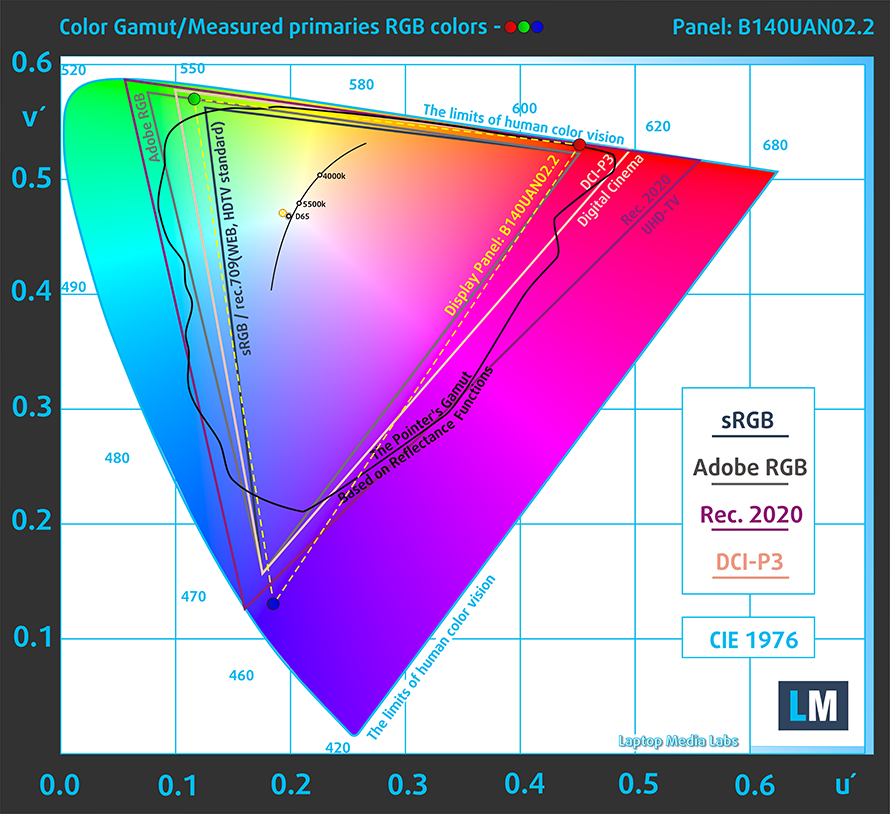
Our “Design and Gaming” profile delivers optimal color temperature (6500K) at 140 cd/m2 luminance and sRGB gamma mode.
We tested the accuracy of the display with 24 commonly used colors like light and dark human skin, blue sky, green grass, orange, etc. You can check out the results at factory condition and also, with the “Design and Gaming” profile.
Below you can compare the scores of Acer TravelMate P6 (TMP614-52) with the default settings (left), and with the “Gaming and Web design” profile (right).
The next figure shows how well the display is able to reproduce really dark parts of an image, which is essential when watching movies or playing games in low ambient light.
The left side of the image represents the display with stock settings, while the right one is with the “Gaming and Web Design” profile activated. On the horizontal axis, you will find the grayscale, and on the vertical axis – the luminance of the display. On the two graphs below you can easily check for yourself how your display handles the darkest nuances but keep in mind that this also depends on the settings of your current display, the calibration, the viewing angle, and the surrounding light conditions.
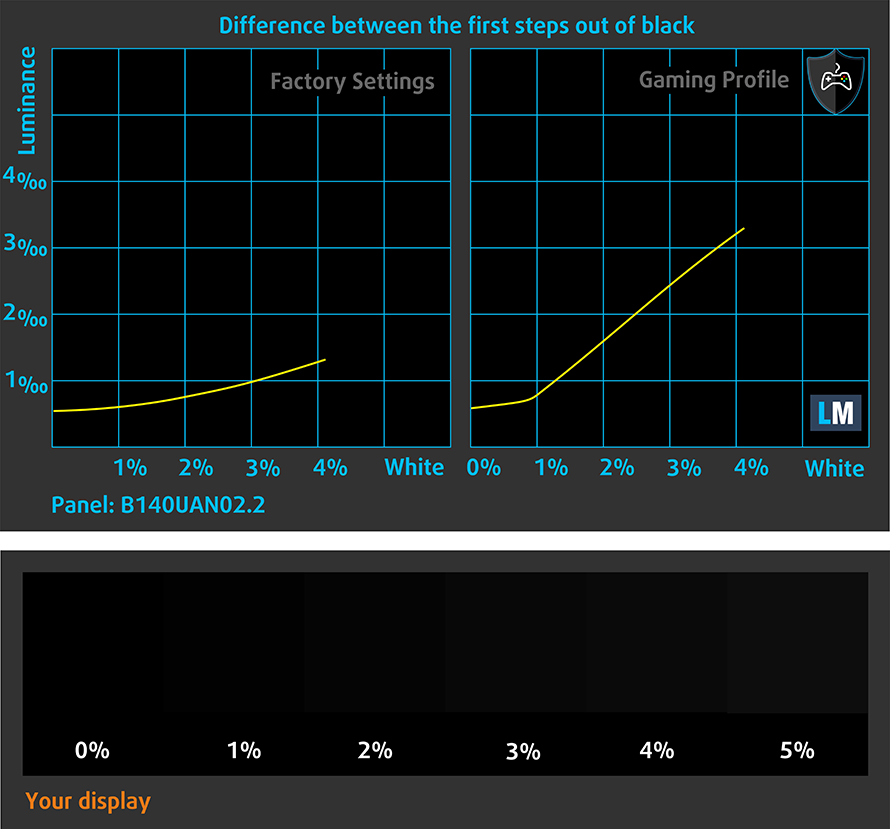
Response time (Gaming capabilities)
We test the reaction time of the pixels with the usual “black-to-white” and “white-to-black” method from 10% to 90% and vice versa.
We recorded Fall Time + Rise Time = 28 ms.

After that, we test the reaction time of the pixels with the usual “Gray-to-Gray” method from 50% White to 80% White and vice versa between 10% and 90% of the amplitude.
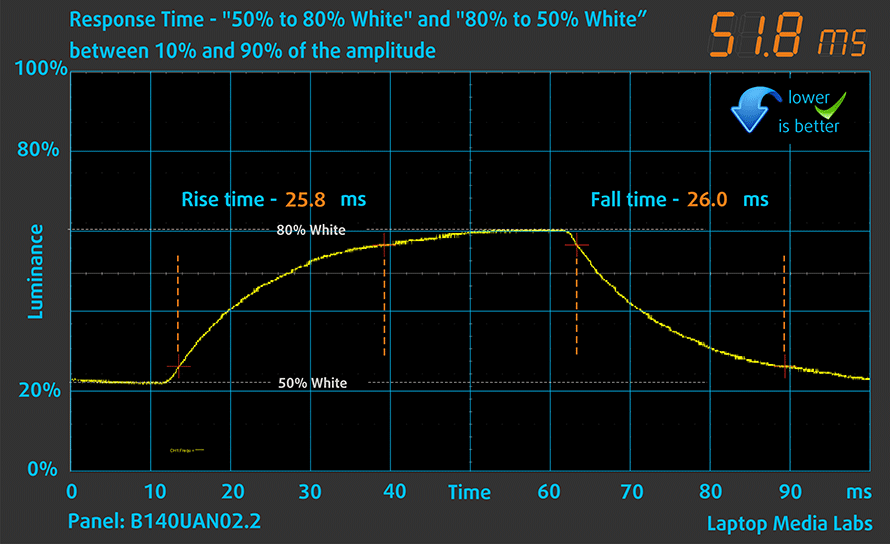
Health impact – PWM / Blue Light
PWM (Screen flickering)
Pulse-width modulation (PWM) is an easy way to control monitor brightness. When you lower the brightness, the light intensity of the backlight is not lowered, but instead turned off and on by the electronics with a frequency indistinguishable to the human eye. In these light impulses, the light/no-light time ratio varies, while brightness remains unchanged, which is harmful to your eyes. You can read more about that in our dedicated article on PWM.
Acer TravelMate P6 (TMP614-52)’s backlight doesn’t use PWM for brightness adjustment. This makes it comfortable for long periods of use.
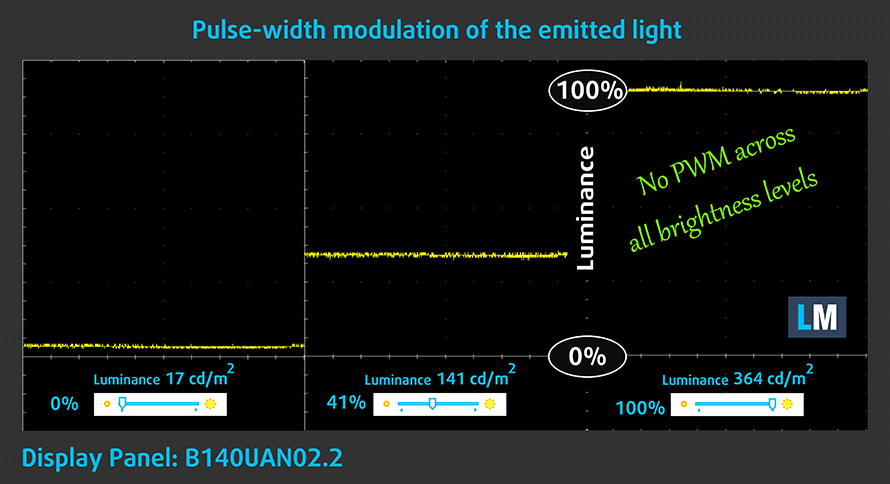
Blue light emissions
Installing our Health-Guard profile not only eliminates PWM but also reduces the harmful Blue Light emissions while keeping the colors of the screen perceptually accurate. If you’re not familiar with the Blue light, the TL;DR version is – emissions that negatively affect your eyes, skin, and your whole body. You can find more information about that in our dedicated article on Blue Light.
Buy our profiles
Since our profiles are tailored for each individual display model, this article and its respective profile package are meant for Acer TravelMate P6 (TMP614-52) configurations with 14.0″ AUO B140UAN02.2 (AUO6F96) (FHD, 1920 × 1200) IPS.
*Should you have problems with downloading the purchased file, try using a different browser to open the link you’ll receive via e-mail. If the download target is a .php file instead of an archive, change the file extension to .zip or contact us at [email protected].
Read more about the profiles HERE.
In addition to receiving efficient and health-friendly profiles, by buying LaptopMedia's products you also support the development of our labs, where we test devices in order to produce the most objective reviews possible.

Office Work
Office Work should be used mostly by users who spend most of the time looking at pieces of text, tables or just surfing. This profile aims to deliver better distinctness and clarity by keeping a flat gamma curve (2.20), native color temperature and perceptually accurate colors.

Design and Gaming
This profile is aimed at designers who work with colors professionally, and for games and movies as well. Design and Gaming takes display panels to their limits, making them as accurate as possible in the sRGB IEC61966-2-1 standard for Web and HDTV, at white point D65.

Health-Guard
Health-Guard eliminates the harmful Pulse-Width Modulation (PWM) and reduces the negative Blue Light which affects our eyes and body. Since it’s custom tailored for every panel, it manages to keep the colors perceptually accurate. Health-Guard simulates paper so the pressure on the eyes is greatly reduced.
Get all 3 profiles with 33% discount
Sound
Acer TravelMate P6 (TMP614-52)’s speakers produce a sound of good quality but average maximum volume. Furthermore, its low, mid, and high tones all have some deviations from clarity.
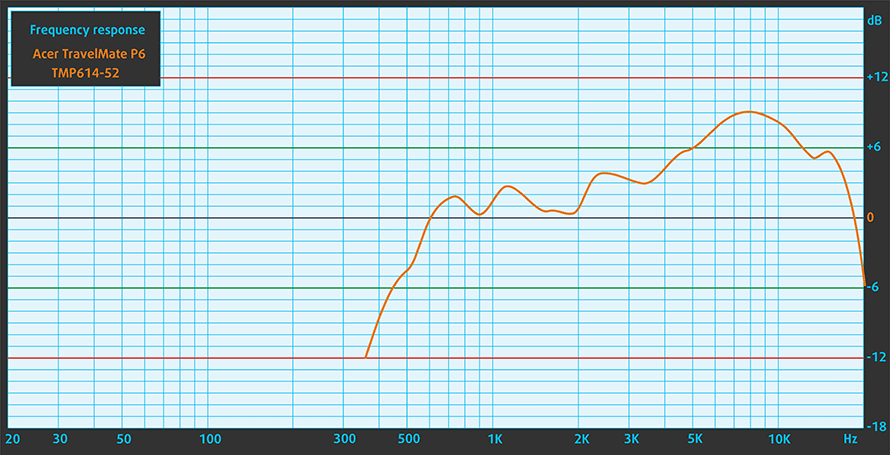
Drivers
All drivers and utilities for this notebook can be found here: https://www.acer.com/ac/en/US/content/support-product/9140?b=1
Battery
Now, we conduct the battery tests with the Windows Better performance setting turned on, screen brightness adjusted to 120 nits, and all other programs turned off except for the one we are testing the notebook with. This device’s 56Wh battery lasts for 16 hours and 40 minutes of Web browsing, or 12 hours and 23 minutes of video playback.
In order to simulate real-life conditions, we used our own script for automatic web browsing through over 70 websites.
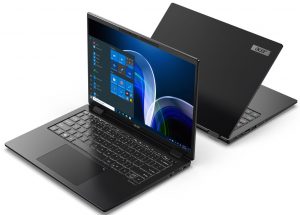
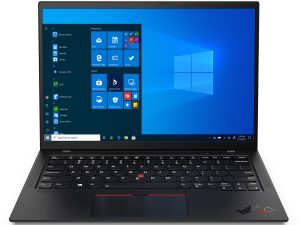
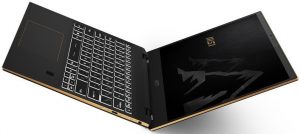
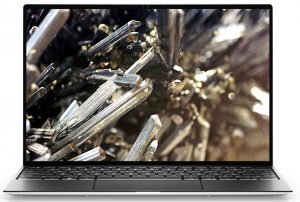
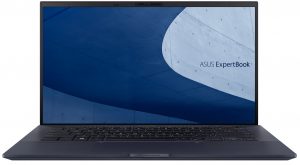
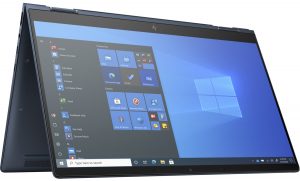
For every test like this, we use the same video in HD.






CPU options
You can get this laptop with the Core i5-1135G7, Core i5-1145G7, Core i7-1165G7, or Core i7-1185G7.
Results are from the Cinebench R23 CPU test (the higher the score, the better)
Results are from our Photoshop benchmark test (the lower the score, the better)
GPU options
Since there are no dedicated graphics options, you are “stuck” with the integrated Iris Xe Graphics G7.
Results are from the 3DMark: Time Spy (Graphics) benchmark (higher the score, the better)
Results are from the 3DMark: Fire Strike (Graphics) benchmark (higher the score, the better)
Results are from the 3DMark: Wild Life benchmark (higher the score, the better)
Results are from the Unigine Superposition benchmark (higher the score, the better)
Gaming tests

| CS:GO | HD 1080p, Low (Check settings) | HD 1080p, Medium (Check settings) | HD 1080p, MAX (Check settings) |
|---|---|---|---|
| Average FPS | 153 fps | 111 fps | 66 fps |

| DOTA 2 | HD 1080p, Low (Check settings) | HD 1080p, Normal (Check settings) | HD 1080p, High (Check settings) |
|---|---|---|---|
| Average FPS | 128 fps | 88 fps | 54 fps |
Temperatures and comfort
Max CPU load
In this test we use 100% on the CPU cores, monitoring their frequencies and chip temperature. The first column shows a computer’s reaction to a short load (2-10 seconds), the second column simulates a serious task (between 15 and 30 seconds), and the third column is a good indicator of how good the laptop is for long loads such as video rendering.
Average core frequency (base frequency + X); CPU temp.
| Intel Core i7-1185G7 (15W TDP) | 0:02 – 0:10 sec | 0:15 – 0:30 sec | 10:00 – 15:00 min |
|---|---|---|---|
| Acer TravelMate P6 (TMP614-52) | 3.48 GHz @ 85°C @ 38W | 3.09 GHz @ 94°C @ 31W | 2.86 GHz @ 81°C @ 26W |
| Microsoft Surface Pro 8 | 3.82 GHz @ 97°C @ 60W | 3.42 GHz @ 85°C @ 45W | 2.84 GHz @ 76°C @ 28W |
| ASUS ExpertBook B9 (B9400) | 3.51 GHz @ 96°C @ 41W | 3.09 GHz @ 96°C @ 31W | 3.05 GHz @ 93°C @ 28W |
| Dell Latitude 13 7320 | 3.65 GHz @ 98°C @ 48W | 3.35 GHz @ 98°C @ 39W | 2.63 GHz @ 79°C @ 23W |
| Lenovo ThinkPad X1 Carbon 9th Gen | 3.53 GHz @ 96°C @ 44W | 3.23 GHz @ 96°C @ 36W | 2.78 GHz @ 91°C @ 26W |
| Lenovo ThinkPad P14s Gen 2 | 3.67 GHz @ 100°C @ 48W | 3.36 GHz @ 100°C @ 39W | 2.54 GHz @ 74°C @ 20W |
| Fujitsu LifeBook U9311X | 3.08 GHz @ 98°C @ 35W | 2.75 GHz @ 97°C @ 27W | 2.26 GHz @ 82°C @ 18W |
| MSI Summit E15 (A11x) | 3.32 GHz @ 94°C @ 38W | 3.19 GHz @ 95°C @ 36W | 3.05 GHz @ 95°C @ 33W |
| Dell Latitude 14 7420 | 3.66 GHz @ 98°C @ 47W | 3.04 GHz @ 97°C @ 30W | 2.17 GHz @ 76°C @ 16W |
| MSI Prestige 14 (A11Sx) | 3.80 GHz @ 94°C @ 53W | 3.48 GHz @ 95°C @ 42W | 3.22 GHz @ 91°C @ 35W |
| Lenovo Yoga 9i (14) | 3.08 GHz @ 92°C @ 42W | 3.14 GHz @ 96°C @ 34W | 2.28 GHz @ 76°C @ 19W |
We were impressed by the way the TravelMate P6 managed its temperatures. In the end, the CPU was not too warm, while the fan noise was not too loud.
Comfort during full load
In addition to that, the warmest spot on the keyboard was near the WASD key area, but the temperature was sitting at 40°C, which is pretty reasonable.
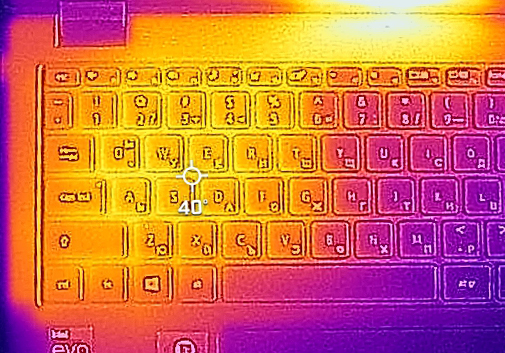
Verdict
 Acer has quietly produced one of the great premium business notebooks on the market. Without too many bells and whistles, the TravelMate P6 (TMP614-52) delivers top-notch performance, which even lets you play some light games when you’re not working.
Acer has quietly produced one of the great premium business notebooks on the market. Without too many bells and whistles, the TravelMate P6 (TMP614-52) delivers top-notch performance, which even lets you play some light games when you’re not working.
The good impression starts right off the bat, as the laptop is made out of an aluminum-magnesium alloy, which is incredibly light. This doesn’t prevent flex resistance, which is also great.
Acer TravelMate P6 (TMP614-52)’s IPS panel has a WUXGA resolution (1920×1200), comfortable viewing angles, and a very good contrast ratio. It covers 99% of the sRGB color gamut, and its backlight doesn’t use PWM for brightness adjustment. Furthermore, our Gaming and Web design profile helps it achieve a standard-matching color accuracy with an Average deltaE of 1.2.
Then, there is the battery life. The 56Wh package lasts for nearly 17 hours of Web browsing, or about 12 hours and 30 minutes of video playback. To make matters even better, you get an optional fingerprint reader, IR face recognition sensor, privacy shutter, and a TPM 2.0 chip.
Arguably, the single disappointment here is found on the inside. It is regarding the memory, which is soldered to the motherboard. On the bright side, you can configure the machine with up to 32GB of quad-channel LPDDR4x RAM. Also, not only is the cooling solution pretty decent, but it also takes care of the 5G module, which can output a lot of heat.
Besides the SIM card tray, there is a MicroSD card reader, two Thunderbolt 4 connectors, an HDMI port, and a full-sized USB port. Not in the last place, the touchpad is covered by Gorilla Glass protection and offers the option to hide an NFC coil beneath it.
This machine is an absolute beast when it comes to features. Yes, it’s not cheap, and it shouldn’t be. In this case, you are really getting what you’re paying for, and in our view – it is totally worth it.
You can check the prices and configurations in our Specs System: https://laptopmedia.com/series/acer-travelmate-p6-tmp614-52/
Pros
- About 17 hours of Web browsing on a single charge
- Extremely light
- 99% sRGB coverage and accurate color representation with our profile (AUO B140UAN02.2 (AUO6F96))
- Two Thunderbolt 4 connectors (both can be used for charging)
- Wi-Fi 6 support plus optional IR face recognition, fingerprint reader, and 5G support
- Quad-channel memory
- No PWM (AUO B140UAN02.2 (AUO6F96))
- Great build quality
- MicroSD card slot
Cons
- Memory is soldered to the motherboard
